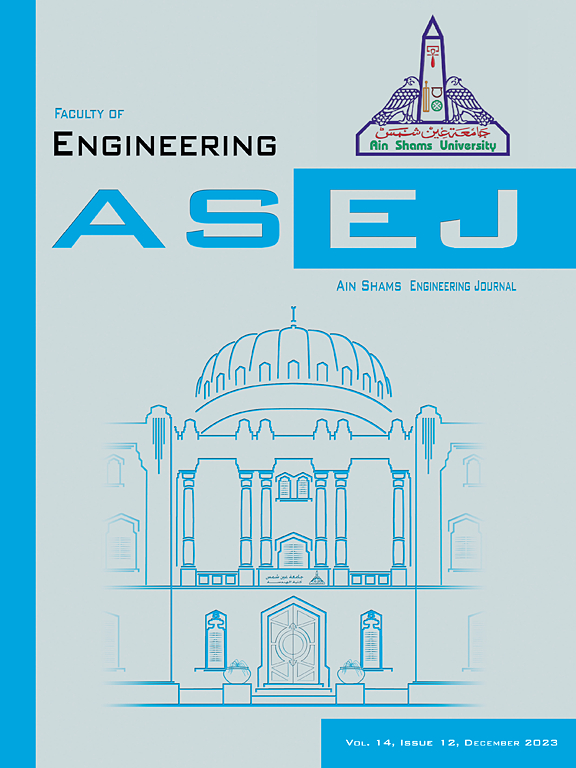Experimental investigations of strengthened beam with co-cured carbon FRP and mussel shell-modified epoxy
IF 6
2区 工程技术
Q1 ENGINEERING, MULTIDISCIPLINARY
引用次数: 0
Abstract
Traditional strengthening materials, such as carbon fibre reinforced polymer (CFRP) plates bonded with synthetic fillers, often rely on non-renewable resources and may have limited environmental compatibility. Thus, mussel shells with a high content of calcium carbonate particles act as rigid particles and alternatives to synthetic filler counterparts added in epoxy resin, enhancing the mechanical properties of filled epoxy. This paper aims to investigate the improvement of flexural resistance by incorporating mussel shell powder as a bio-filler of epoxy resin (hereafter referred to as mussel shell-modified epoxy, MME), which was then used as the bonding agents with CFRP sheets via co-cured technique as a beam strengthening method. A four-point bending test was conducted to investigate four parametric studies, i.e., CFRP bonded lengths (Series A), mussel shell powder volume fraction (Series B) and different percentages of pre-load applied on concrete beams with different bonding agent types, i.e., MME (Series C) and neat epoxy resin (Series D). A 7.5% volume fraction of MME and the most extended CFRP sheet enhanced the ultimate load with deflection (associated with concrete ductility) of the strengthened plain beams by 108% and 58%, respectively, compared to the control beam. Interestingly, up to 66% improvement was observed in Series C by applying pre-load at 60% of the control beam’s ultimate load, comparing beams strengthened with MME to those using neat epoxy (Series D). In this test, pre-loading was applied by subjecting the concrete beams to 60% of their ultimate capacity using a Universal Testing Machine (UTM) before applying CFRP sheets, ensuring consistent initial stress conditions for reliable comparison. Hence, MME is a viable bio-filler incorporated in epoxy resin to enhance co-cured CFRP as a strengthening material.
碳纤维FRP与贝壳改性环氧树脂共固化加固梁的试验研究
传统的增强材料,如碳纤维增强聚合物(CFRP)板与合成填料粘合,往往依赖于不可再生资源,可能具有有限的环境相容性。因此,在环氧树脂中添加高含量碳酸钙颗粒的贻贝壳作为刚性颗粒和合成填料的替代品,提高了填充环氧树脂的力学性能。本文旨在研究将贻贝粉作为环氧树脂(以下简称贻贝改性环氧树脂,MME)的生物填料,通过共固化技术与CFRP片材结合,作为增强梁的方法,提高CFRP片材的抗弯性能。采用四点弯曲试验,对CFRP粘结长度(A系列)、贻贝粉体积分数(B系列)以及不同粘结剂类型(MME (C系列)和纯环氧树脂(D系列))对混凝土梁施加的不同预载荷百分比进行了四项参数研究。与对照梁相比,7.5%体积分数的MME和最长长度的CFRP片材使加固平梁的极限挠度荷载(与混凝土延性有关)分别提高了108%和58%。有趣的是,在C系列中,使用MME加固的梁与使用纯环氧树脂加固的梁(D系列)相比,在控制梁的极限载荷的60%处施加预载荷,可以观察到高达66%的改善。在本试验中,使用通用试验机(UTM)对混凝土梁施加其极限承载力的60%的预加载,然后再施加CFRP片材,确保一致的初始应力条件,以进行可靠的比较。因此,MME是一种可行的生物填料,加入环氧树脂,以增强共固化CFRP作为增强材料。
本文章由计算机程序翻译,如有差异,请以英文原文为准。
求助全文
约1分钟内获得全文
求助全文
来源期刊

Ain Shams Engineering Journal
Engineering-General Engineering
CiteScore
10.80
自引率
13.30%
发文量
441
审稿时长
49 weeks
期刊介绍:
in Shams Engineering Journal is an international journal devoted to publication of peer reviewed original high-quality research papers and review papers in both traditional topics and those of emerging science and technology. Areas of both theoretical and fundamental interest as well as those concerning industrial applications, emerging instrumental techniques and those which have some practical application to an aspect of human endeavor, such as the preservation of the environment, health, waste disposal are welcome. The overall focus is on original and rigorous scientific research results which have generic significance.
Ain Shams Engineering Journal focuses upon aspects of mechanical engineering, electrical engineering, civil engineering, chemical engineering, petroleum engineering, environmental engineering, architectural and urban planning engineering. Papers in which knowledge from other disciplines is integrated with engineering are especially welcome like nanotechnology, material sciences, and computational methods as well as applied basic sciences: engineering mathematics, physics and chemistry.
 求助内容:
求助内容: 应助结果提醒方式:
应助结果提醒方式:


